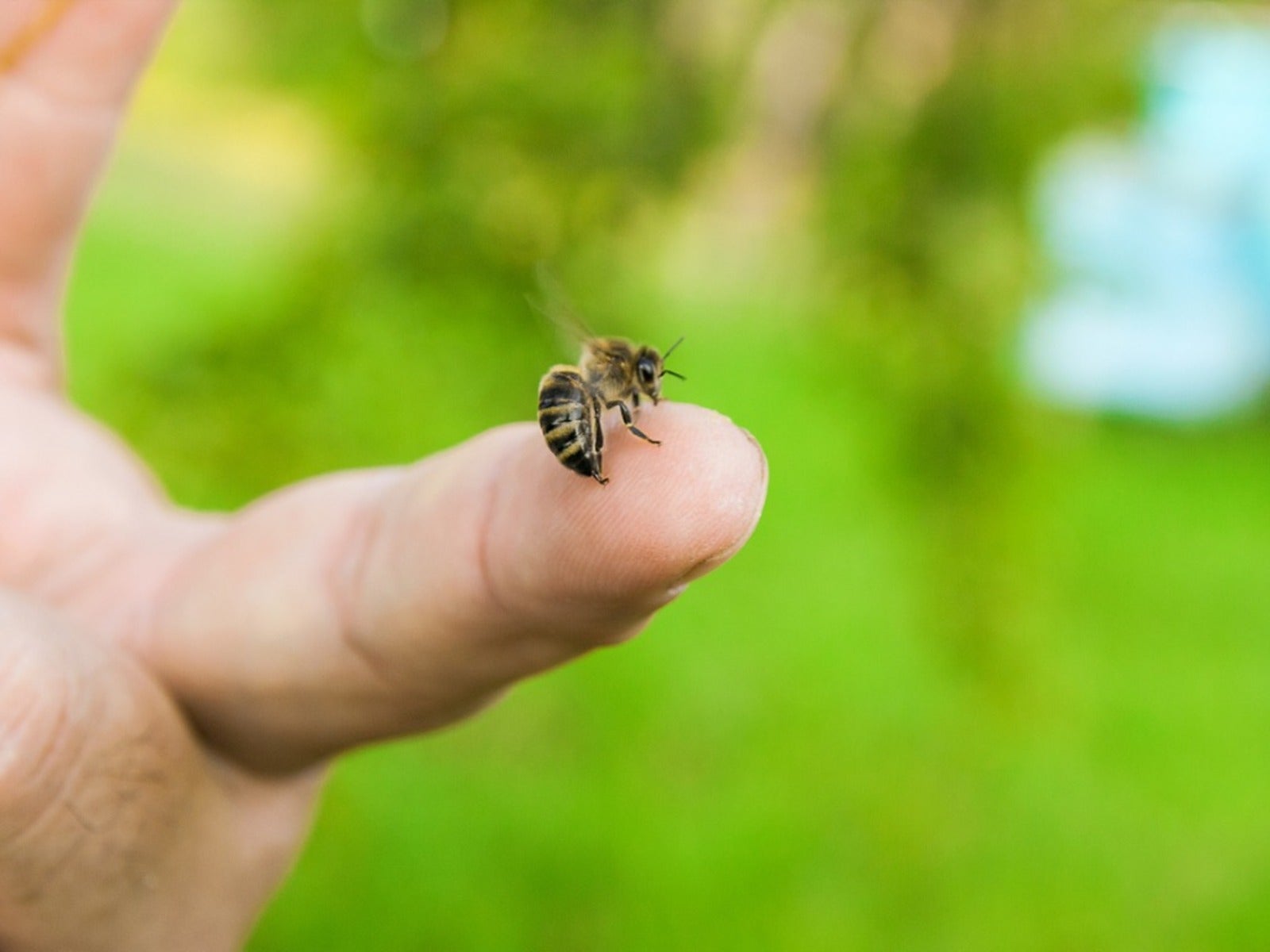Bee Sting Self-Care: Bee And Wasp Sting Treatment At Home


There are around 25,000 species of bee worldwide, and North America is host to 4,000. Most bees are not aggressive and will only sting if directly threatened, but some will get overly defensive and can even swarm when disturbed. It is common to chance upon a bee’s nest while gardening. Many live in hives while others live in the ground, such as bumblebees and mining bees. Sting incidents often happen when the gardener is digging in the ground and exposes a bee’s home. Treating bee stings that result should start immediately to slow the progress of the bee’s venom.
Most people have had a bee sting. They are often a memory from childhood, when our youthful clumsiness puts us in contact with stinging insects. The injury still happens when we are adults, though, usually when we inadvertently encounter a bee home or touch a bee. Most bee sting remedies start with home care. Occasionally, a victim is allergic to venom and should be rushed to the hospital or use their epi-pen, but most respond to a common home remedy for bee stings.
What to Do for a Bee Sting
Quick action when stung will help alleviate some of the pain and swelling derived from the venom of the bee. Most stinging insects keep their stinger, but in the case of honeybees, it will rip away from the insect and lodge in the skin. So, if the attacker was a honeybee, the first step is to remove that stinger and the venom sack. Leaving it lodged in the skin will mean a higher dose of venom, as well as the irritation of a foreign body in the dermis. The venom will keep pumping into the skin for up to 60 seconds, so removal is key to lower symptoms. Fingernails, tweezers, or even the edge of a credit card can help in removal of the stinger. Fast action in removal of the stinger will reduce the pain, swelling, and discomfort of the site. If you know you are allergic, always carry two epi-pens, as a second one may be necessary 20 minutes after the injury.
Bee Sting First Aid Home Remedy
It seems like everyone has their favorite home treatment for bee stings. Experts recommend washing the area with soap and water or an antiseptic wipe. Bee stingers are modified egg laying parts. Therefore, the only bees that sting are females. The chemical in the venom that is responsible for the pain sensation is melittin, which stimulates the nerve ends of pain receptors in skin.
The pain lasts only a short time, and the next symptoms are swelling and itching. There are creams available with antihistamine properties that will help with these symptoms. Applying ice to the area frequently will effectively reduce the swelling and initial pain. Take an over the counter pain reliever if pain persists, and an oral antihistamine if itching is severe. Stings that occur internally after ingesting an insect, or around the throat and mouth can cause swelling that is dangerous. Seek medical treatment in these cases.
Home Remedies for Bee Stings
If any of the following occurs, there is a chance you are allergic and should seek medical attention.
- Shortness of breath
- Swelling in the face, eyes, nose, or throat
- Dizziness or faintness
- Hives
- A swollen tongue
If you are not sensitive to bee venom, there are many common home remedies. The most common is to make a paste of baking soda and water to plaster over the sting. This is supposed to soothe the area and draw out venom. Cover the paste with a bandage and leave it on for at least 15 minutes.
Gardening tips, videos, info and more delivered right to your inbox!
Sign up for the Gardening Know How newsletter today and receive a free copy of our e-book "How to Grow Delicious Tomatoes".
Cold compresses are also recommended to cool the skin and ease the sting in the site. Cool, loose clay is also an old home remedy. Aloe vera gel will perform much like it does on a burn and relieve the heat in the sting site. Other home staples like apple cider vinegar and even honey are said to give relief.

Bonnie Grant is a professional landscaper with a Certification in Urban Gardening. She has been gardening and writing for 15 years. A former professional chef, she has a passion for edible landscaping.